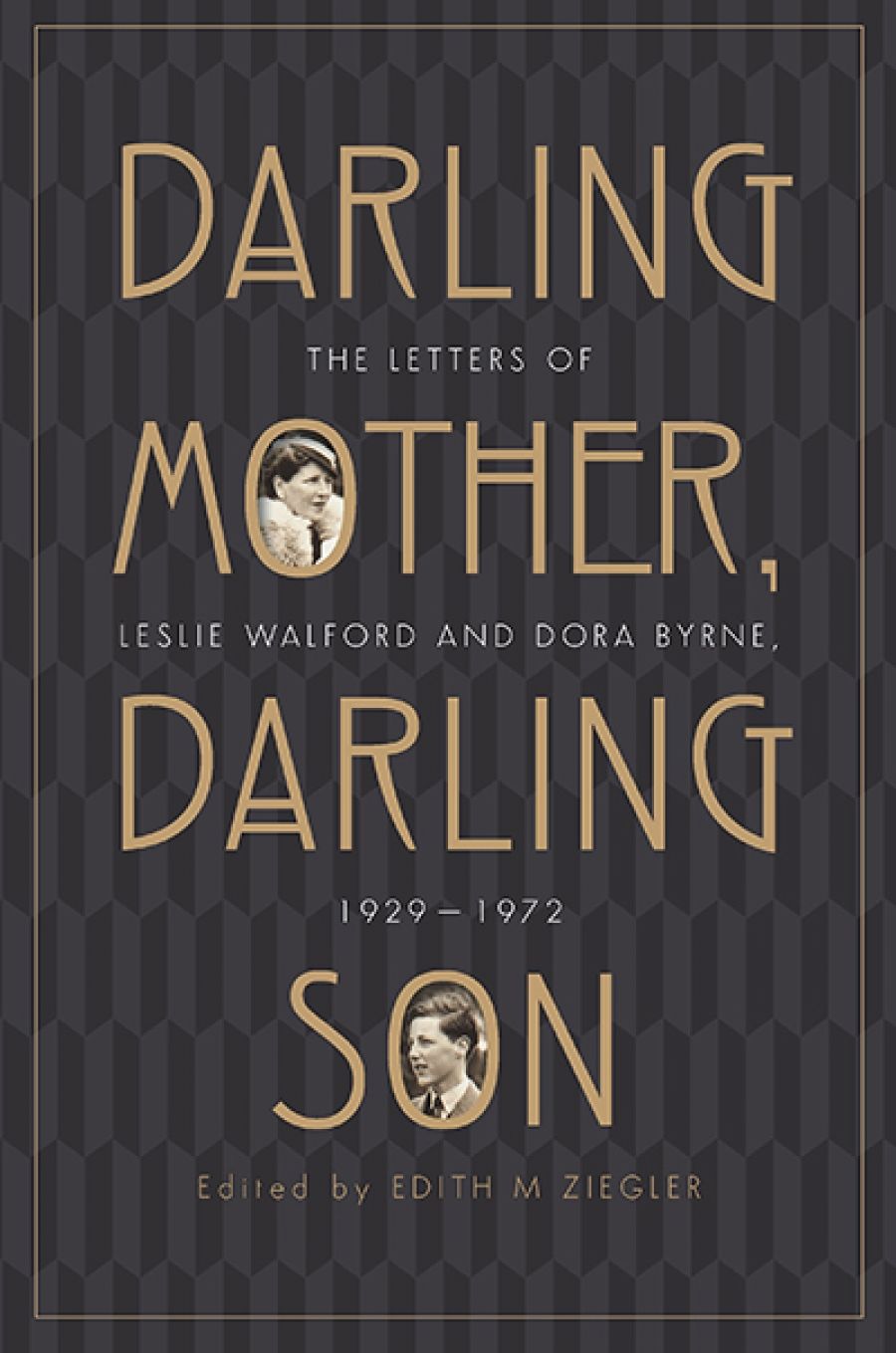
- Free Article: No
- Contents Category: Letters
- Custom Article Title: John Thompson reviews 'Darling Mother, Darling Son: The letters of Leslie Walford and Dora Byrne, 1929–1972' edited by Edith M. Ziegler
- Custom Highlight Text:
On his death in February 2012, Leslie Nicholl Walford, the man who right from the outset of his career had determined to shift Australian taste away from drab interiors filled with Victorian brown furniture, was saluted as one of Australia’s most influential interior designers. With a sensibility honed in Paris, where he attended ...
- Book 1 Title: Darling Mother, Darling Son
- Book 1 Subtitle: The letters of Leslie Walford and Dora Byrne, 1929–1972
- Book 1 Biblio: NewSouth and Sydney Living Museums, $49.99 hb, 416 pp, 9781742235257
Still, for some, the pejorative tag ‘Sydney decorator’ carries with it more than a suggestion of high campery. Even while the acerbic diarist, the painter Donald Friend grudgingly complimented what he saw to be ‘Leslie’s triumph of modish sumptuousness’ in the gilded mirrors, excellent paintings, marble, marquetry and ormolu – all ‘very impressive, and well arranged’ – in the designer’s own handsomely decorated Sydney apartment, the put-down is clear. Against the backdrop of his host’s splendid furniture, Friend’s malicious pen recorded the presence of a clutter of ‘Sheridan’s fops’, each carefully dressed as the creature he aspired to be but with their actual characters and professions of everyday life undisguisedly apparent – ‘milliners, shop salesmen, decorators, hairdressers and draper’s assistants, all attaching themselves as satellites to the stars of their firmament, the “famous” ones who get their names in the social columns of newspapers several times a week for such difficult attainments as eating in public places in the company of other famous names from overseas’.
No doubt there is more than passing truth in Friend’s bitchy account of a party given by Leslie Walford in the autumn of 1964, but a different and more interesting picture of the man emerges in Edith M. Ziegler’s deft and highly readable selection of the letters he exchanged with his mother, Dora Byrne, ‘fashion leader, trendsetter and tastemaker’. With Ziegler’s thoroughly well-informed linking narrative, the correspondence runs from Leslie’s schooldays in the 1930s until the end of 1972 when he was securely and splendidly established in business in Sydney. Leslie Walford was Dora’s only child, the object of her adoring but not uncritical affection. Her letters to him are a testimony to her careful parenting, but they offer too an illuminating account of her own Sydney social milieu described by Ziegler as ‘conservative, financially secure, gendered and somewhat self-regarding’. In this she presided for several years as a society hostess, clubwoman, charity queen, and stylish leader of fashion. Her own taste, good head for business, and alertness to style trends in Sydney, contributed greatly to the formation of Leslie’s well-laid plans for his design career in Australia once his long sojourn in Europe had ended in 1956.
 Dora Byrne and Leslie Walford, 1945 (photograph from book)
Dora Byrne and Leslie Walford, 1945 (photograph from book)
Leslie’s letters to his mother are those of a serious-minded and dutiful son as he was in his schooldays first at Tudor House near Sydney and then at Winchester, an English public school. For years, Dora’s ambition for her son was a career in the Australian Diplomatic Corps, but his social distractions and subsequent third class degree from New College, Oxford saw that fade apparently without regret by Dora or Leslie himself. By then, in any case, having attained his majority, Leslie had come into possession of his inheritance (he was the beneficiary of the estates of both his father and grandfather) and had begun the journey to his destination as a designer, sophisticate, and a surprisingly tough man of business. His ambitions were twofold: a place in the haute monde of European and Australian society; and the establishment of a prestigious decorating business selling fabrics, antiques, furniture, and high-quality homewares. In both of these his success was emphatic. In the quest for love he would ignore his mother’s advice to ‘keep clear of ALL homosexuals dearest son’, eventually settling into a domestic partnership with the travel agent Richard (Dickie) Keep, and after Keep’s death, with Colin Davies, who survives him.
Illuminated by Ziegler’s well-nuanced understanding of the social and cultural history of Sydney, this exchange of letters yields much of interest and value. Dora’s world has virtually disappeared or changed beyond recognition, making her letters a window onto a particular era of Australian life. And in Leslie’s story we have what Ziegler calls a classic European Bildungsroman – an account of a young man’s formation, his education, emotional maturation, and development into an adulthood concerned with art, culture, design, and the range of human experience. Dora’s moving presence in this story is that of nurturer, comforter, supporter, spiritual guide, moral guardian, and collaborator.


Comments powered by CComment